Table of Contents
In this sneak peek, we’re excited to introduce several new functionalities that will make task management, status updates, scheduling, and time tracking even more efficient and user-friendly.
From the ability to add tasks with ease to streamlined automation for creating meetings, Yoroflow is committed to empowering users with tools that simplify and optimize their work processes.
Let’s dive into the details of these exciting new features.
Work Smarter, Not Harder: Yoroflow's Latest Features
Add Task Easily
Users can utilize the “Add Task” option available in various menus such as Dashboard, My Tasks, Reports, etc., instead of being limited to adding tasks only within an application.

This option is accessible in all columns (excluding completion columns). When a new task is added to a specific column, it will be created with the status of that column and displayed accordingly.
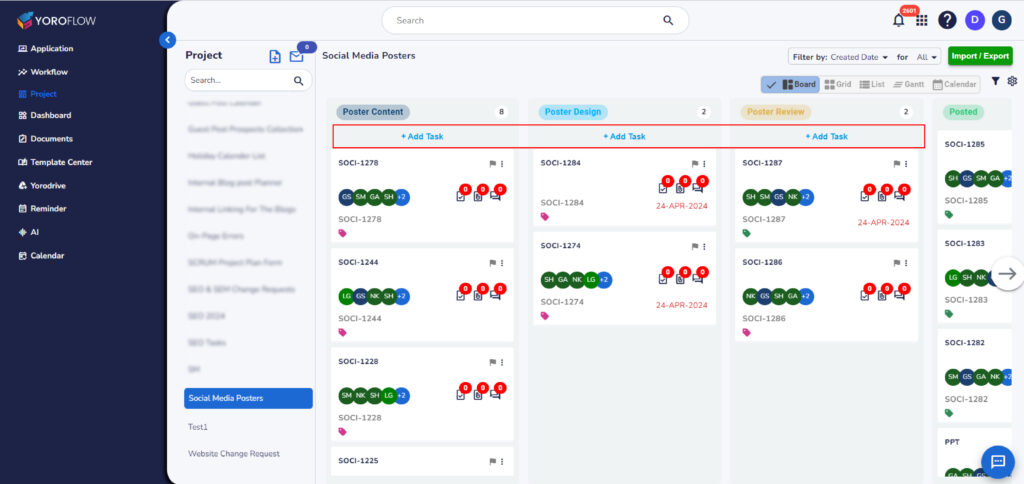
Change Status
The latest update in Yorodesk is the request type and status. In my request page, new features are added to enhance the customer experience. Two statuses waiting for customer and waiting for agent are added to the status feature. This helps the team to identify the type of request. Waiting for customer denotes that in this request agent is waiting for the customer and waiting for the agent refers to the customer is waiting for the agent.
In addition to these features, priority can be added to notify the urgency of the request for the team to handle it. Another update in Yorodesk allows users to view the details of the request just by clicking the name directly.
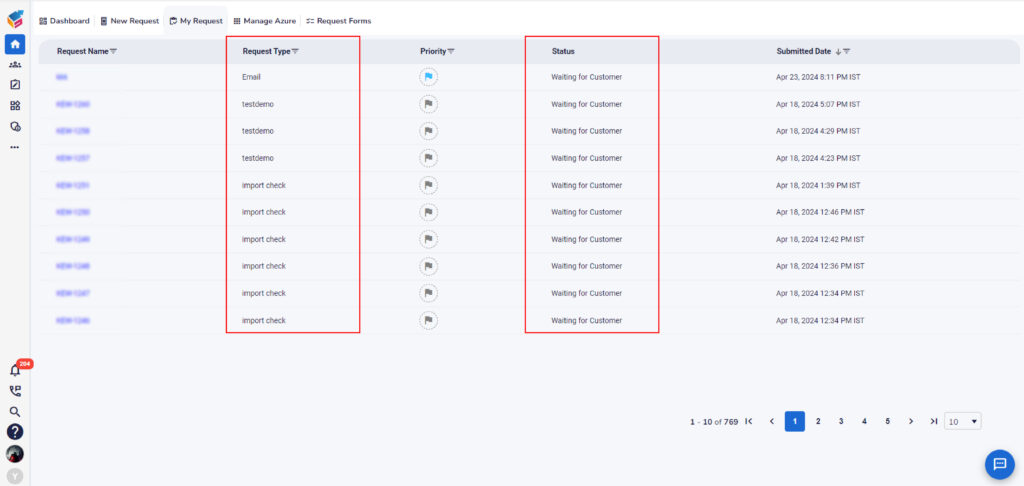
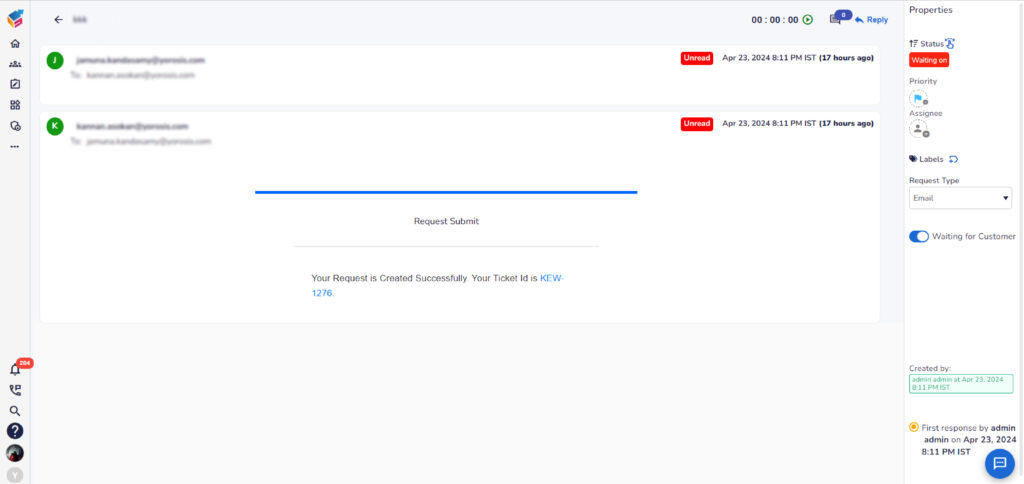
Date Picker
In Yoroflow, the Date Picker feature boasts a straightforward and user-friendly interface, enabling users to swiftly input dates and months.
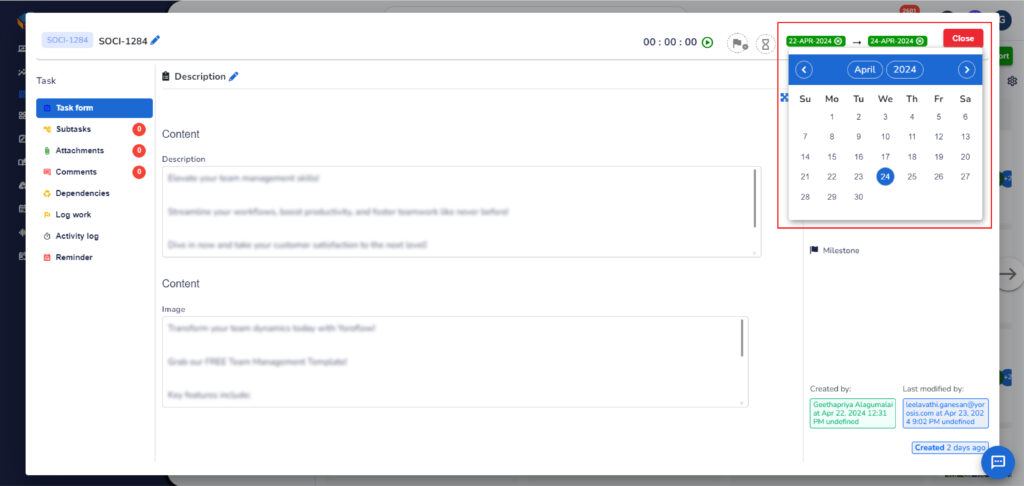
Automation in Creating Meeting
In YoroCRM and Yoroproject, creating meeting automation is added as the latest update. To create automation, users need to go to the automation centers on the event automation page. Then choose the scenarios as per the requirements of the automation. These scenarios can be chosen by clicking the buttons given under the select condition.
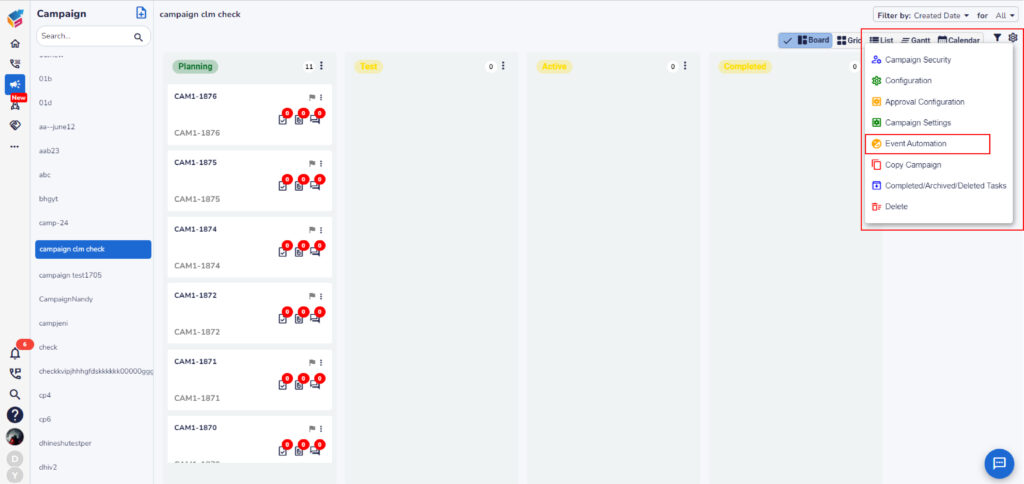


To configure the meeting, users need to provide the required information like email settings, meeting start time, end time, time zone, users, teams, and meeting title. Email settings can be chosen from the available list or can enable the last modified user button. By enabling this, it automatically takes the user who modified previously. These information columns can be modified as per the meeting apps like Teams meeting, Zoom meeting, or custom meeting chosen. These meeting apps can be customized from the “My App” page. These apps can be added or removed from my app page. Meeting start time and end time can be mapped from the date and time given in the custom fields of CRM administration. A reminder feature is also added to remind the user about the meeting in the chosen time interval between 5 to 60 minutes.


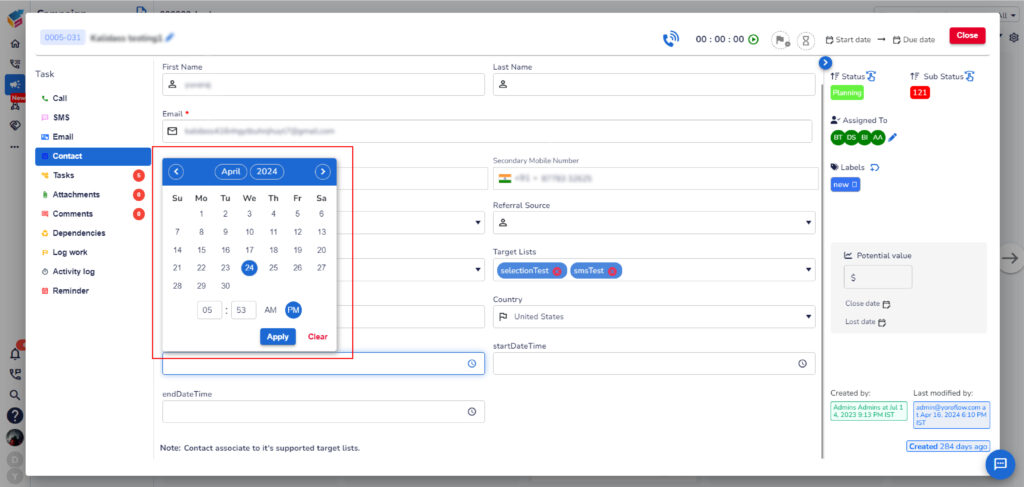
Meeting titles can be given manually, or you can select from the options given below. These options will be a list of system variables and contact fields (YoroCRM) or form fields (Yoroproject). For Zoom and Teams meetings, in addition to these data, organizer information is required. Also, users can attach files from Yorodrive.
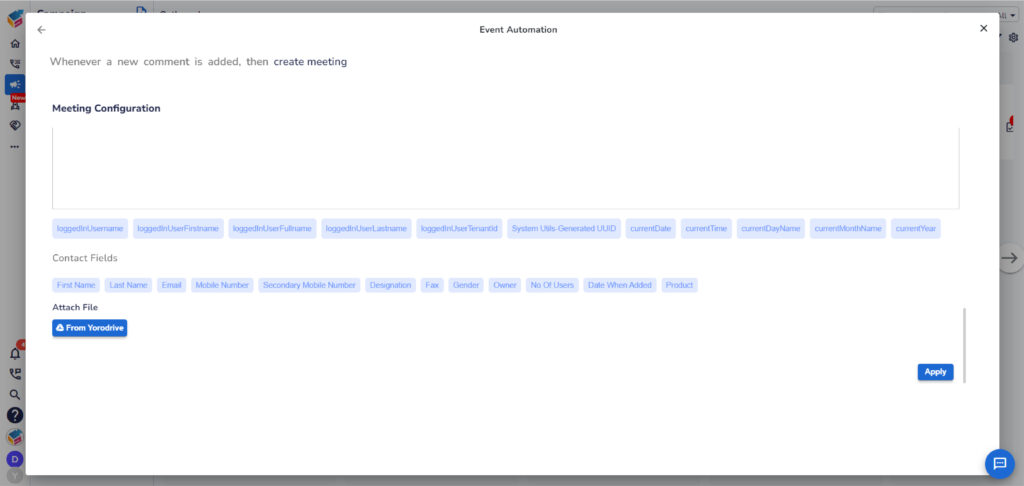
Log Work (Add Minutes)
In Yoroflow, users can now specify work logs not just in hours, but also in minutes, allowing for precise monitoring of their working time.
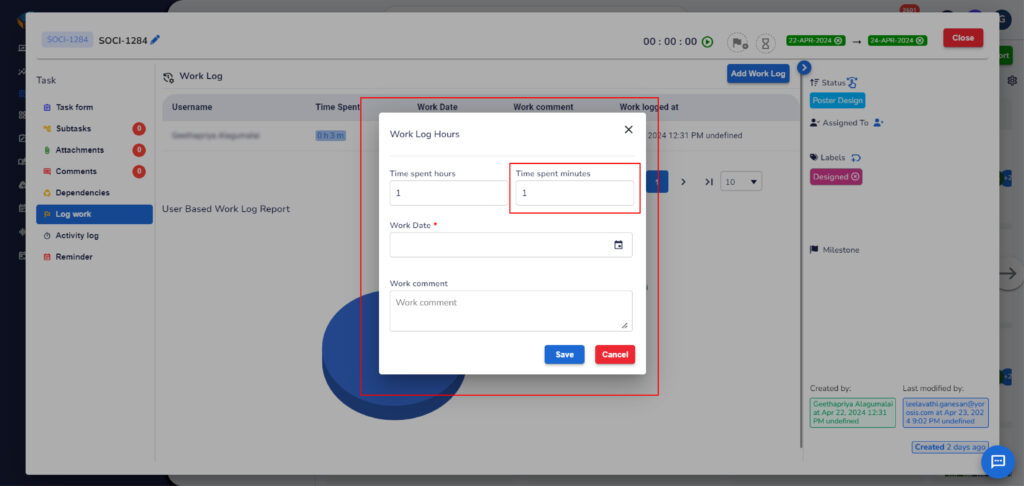
“Stay tuned for the next official release and get ready to experience a more streamlined and productive workflow with Yoroflow/Yorodesk/Yoroproject/YoroCRM!”




